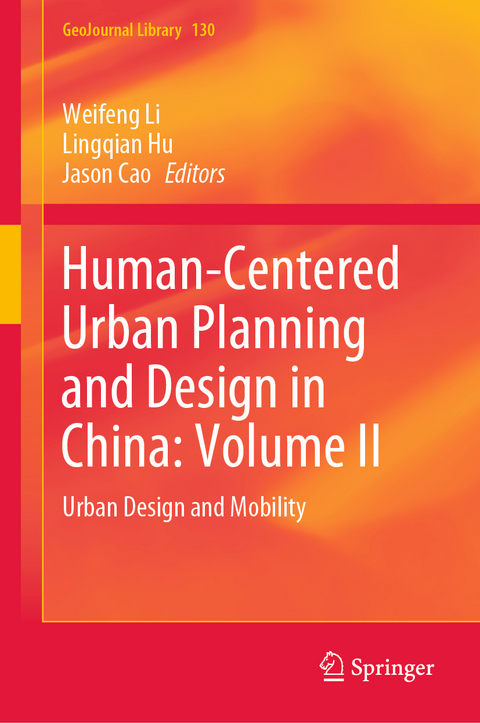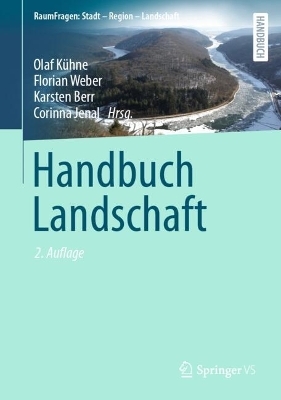
Human-Centered Urban Planning and Design in China: Volume II
Springer International Publishing (Verlag)
978-3-030-83859-1 (ISBN)
This book provides insights and discusses human-centered urban design and placemaking, human activities and urban mobility in China. It argues that sustainable urban design and mobility should be "people-centered" and concerned about "place-making" in the new era of Chinese urbanization. Successful urban design and placemaking should adopt interdisciplinary approaches to planning and designing "space" and "place". A core vision is the delivery of urban spaces that can cater to the needs of an increasingly diverse crowd of urban dwellers calling cities home. The book prompts Chinese urbanists to reconsider and explore a sustainable and people-first planning and design approach with Chinese characteristics. The breadth and depth of this book is of particular interest to those faculty members, students, practitioners and the general public who are interested in subjects like urban design, transport planning, mobility analysis and planning, housing and community development, infrastructure planning, environmental planning, social equity and beyond.
This book discussing human-centered urban design and placemaking, human activities and urban mobility is part of a 2 volume set. Volume I deals with human-centered urban planning and development, rural planning and urban-rural coordination in China.
lt;p>Weifeng Li is an Associate Professor in the Department of Urban Planning and Design at the University of Hong Kong. Dr. Li received his Ph.D. in Urban and Regional Planning from Massachusetts Institute of Technology (MIT). He also holds both a Master's degree and a bachelor's degree in Geography from Peking University, China. His research interests focus on environmental sustainability, urbanization and environmental changes, land use-transportation planning interactions and the environmental and energy impacts, as well as the use of GIS and spatial analysis in urban planning. Currently he is working on neighborhood design and energy efficiency funded by Research Grants Committee in Hong Kong and built environment and air quality funded by NSF of China. Dr. Li was a board member of the International Association for China Planning (IACP), 2013-2017.
Lingqian Hu is Chair of the Department of Urban Planning, School of Architecture & Urban Planning at The University of Wisconsin-Milwaukee. Prof. Hu received her Bachelor of Planning degree from Nanjing University in China and a Master of Planning and doctorate in Policy, Planning, and Development from the University of Southern California. As a professor of urban planning, She teaches courses on transportation and land use planning, urban development theories, and transportation and GIS. Prof. Hu is also the chair of the International Association for China Planning (IACP).
Jason Cao is a professor of urban planning in the Humphrey School of Public Affairs, University of Minnesota, Twin Cities. He received a Ph.D. degree from University of California, Davis. His research interests include land use and transportation interactions, the impacts of ICT on travel behavior, and planning for subjective well-being. He is internationally well-known for his research in addressing residential self-selection in the relationships between land use and travel behavior and exploring nonlinear associations with travel behavior through machine learning. He is an Editor-in-Chief of Transportation Research Part D: Transport and Environment (2018-2023). He was the chair of International Association for China Planning (2015-2017).
Part I: Urban design and placemaking.- Chapter 1. Space-oriented Elements and Their Relevance to Chengdu Street Cultural Landscape(Lingqing Zhang and Jing Yan).- Chapter 2. Study of the Fifth Façade Planning and Controlling in the Wuhan Aerotropolis(Guanpeng Liu, Shaozhi Hong, Ying Wang, Ling Dai and Weixuan Wei).- Chapter 3. Station-City Integration: Urban Space Ecological Transformation Research Based on Rail Transit(Yang Yue and Jiang Chang).- Chapter 4. Overview of the Research Progress of TOD at Home and Abroad - Based on the Visual Analysis into Citespace Software(Xuan Zhuo, Jiang Chang and Yuanyuan Deng).- Chapter 5. Towards a definition of bikability in the Chinese context(Aline Chevalier, Manuel Charlemagne, and Leiqing Xu).- Chapter 6. The Activation System of the 'Three-dimensional City' in Urban Renewal(Qing Mei).- Chapter 7. Research on the Generation Mechanism of Urban Innovation Space(Peng Zeng and Jinxuan Li).- Chapter 8. A Strategic Approach to Activating Multi-level Public Space in Neighborhoods along Urban Expressways(Yijia Guo and Yan Huang).- Chapter 9. Urban Form Analysis of Courtyard in Traditional Settlements - Case Study of Three Lanes and Seven Alleys District in Fuzhou city(Li-bin Zhou and Hsiao-Tung Chang).- Chapter 10. Analysis of Existing Research on the Architecture Culture and Ecological Technique used in Li`s Courtyard in Yanjing Village, Shanxi Province(Yuanfen Lv).- Part II: Human activities and urban mobility.- Chapter 11. Understanding the Substitution of Commuting Trip Chains for Other Home-based Trips and Factors' Effects on Commuting Trip Chaining Propensity - Using Shanghai Mobile Phone Sighting Data(Yishu Wang and Haixiao Pan).- Chapter 12. Spatial and Temporal Characteristics of Passenger Travel Modes: A Study Based on Shanghai Smart Card Data(Huanxi Xu and Shaozhi Hong).- Chapter 13. Study of the Spatial-Temporal Characteristics of College Students' Activities Based on Mobile Phone Data(Chenchen Sun, Xinyi Niu and Xiaodong Song).- Chapter 14. Cycling to School in China: Identifying Patterns in Safety Perception(Aline Chevalier, Manuel Charlemagne and Leiqing Xu).- Chapter 15. Effects of the Built Environment on the Route-Choosing Behaviors of Recreational Cyclists in Shenzhen(Ting Wen and Kun Liu).- Chapter 16. The Effects of Parks and Surrounding Built Environments on Physical Activity Diversity with Volunteered Geographic Information(Hongkun Xie, Miao Yu and Kun Liu).- Chapter 17. The Inflow and Outflow Pattern of University Graduates of Major Cities in China from the Perspective of Flow Space(Jingxin Nie and Helin Liu).- Chapter 18. A Study on the Distribution of Migrants with Different Education Levels in Shanghai(Ziqi Liu, Bev Wilson and Wei Zhu).
| Erscheinungsdatum | 17.11.2021 |
|---|---|
| Reihe/Serie | GeoJournal Library |
| Zusatzinfo | XII, 358 p. 203 illus., 151 illus. in color. |
| Verlagsort | Cham |
| Sprache | englisch |
| Maße | 155 x 235 mm |
| Gewicht | 715 g |
| Themenwelt | Naturwissenschaften ► Geowissenschaften ► Geografie / Kartografie |
| Sozialwissenschaften ► Soziologie | |
| Schlagworte | Built Environment and Housing • Chinese urbanization • Distribution of Migrants • Environmental and Ecological Planning • Generation Mechanism of Urban Innovation Space • GIS • Green Space and Surrounding Built Environments • Health Cities • Housing and Community Development • Human Activities and Urban Mobility • Multi-level Public Space in Neighborhoods • sustainable development • Three-dimensional City • Urban and Spatial Planning • Urban Design and Placemaking • Urban Dwellers • Urban Form Analysis of Courtyards • Urban Lifestyle • Urban renewal • Urban Space Ecological Transformation |
| ISBN-10 | 3-030-83859-5 / 3030838595 |
| ISBN-13 | 978-3-030-83859-1 / 9783030838591 |
| Zustand | Neuware |
| Haben Sie eine Frage zum Produkt? |
aus dem Bereich


